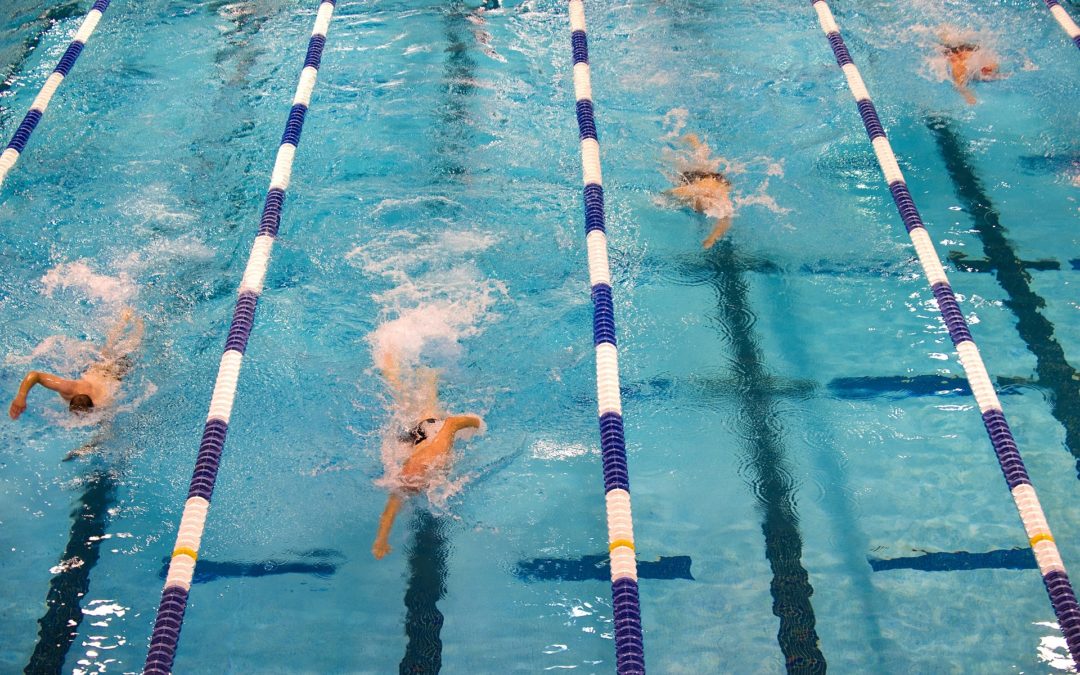Within-Sport Specialization and Entry Age as Predictors of Success Among Age Group Swimmers
Ilka Staub, Christoph Zinner, Andreas Bieder & Tobias Vogt. European Journal of Sport Science;2020. DOI: 10.1080/17461391.2019.1702107
Take-Home Message
A swimmer who entered the top 100 rankings at a younger age or had more diversity at an earlier age (i.e., more events, strokes, or distance categories) was more likely to perform better at 18 years of age.
Summary
When an athlete focuses on only 1 sport at the exclusion of any other year-round (i.e., sport specialization) they are at greater risk of injury or burnout. However, we know little about within-sport specialization, where an athlete participates in only one position/stroke within a sport. Within-sport specialization may limit someone’s skill development to just that one role. This is particularly relevant in swimming where a competitor may compete in different strokes (freestyle, backstroke, breaststroke, butterfly) but focus their training on 1 stroke (freestyle). Therefore, the authors used existing swimming records to examine the relationship between the degree of specialization during childhood/adolescence, entry age into the national top-100 rankings, and performance at 18 years of age. The authors also examined differences in these factors between 18-year old swimmers on the senior national team or not. They examined 1,705 German, 18-year old competitive age swimmers (51% female; 24 senior national team members) that were ranked in the top 100 at some point between 11 to 18 years of age. Within-sport specialization was defined by the number of events (13 different events; e.g., 50-m Freestyle, 100-m Backstroke), strokes, or distance categories at each age of competition. Performance at 18-years of age was calculated based on a ratio of the swimmer’s best time and the world record. A swimmer who entered the top 100 rankings at a younger age or had more diversity at an earlier age (i.e., more events, strokes, or distance categories) was more likely to perform better at 18 years of age. Lastly, national members tended to enter the top-100 rankings at a younger age and have more diversity earlier in their swim career than non-national team members.
Viewpoints
The authors found evidence that within-sport specialization during childhood/adolescence may be related to lower performance at 18 years of age. Hence, it may be beneficial to encourage swimmers to have greater within-sport diversification. For example, we may encourage swimmers to train with a variety of strokes and distances. However, this study was performed in an elite group of athletes and the results may differ in a broader population. Additionally, the authors failed to consider the importance of training loads (practice distances per week, time off per year) or overall sport specialization. In future research on sports diversification, it would be interesting to identify how the risk of injury is changed by sport specialization and within-sport specialization since a swimmer with more within-sport diversity may still be quitting other sports to swim all year. Currently, coaches should be aware that sport diversification at a young age may be beneficial to allow an athlete to develop multiple sport skill sets. Furthermore, coaches should adhere to the guidelines regarding sport specialization and promote diversity of activities not just within a particular sport but also between sports.
Questions for Discussion
Do you see benefits in sport diversification? Have you identified athletes with chronic injuries due to playing one sport even if they play multiple positions or swim different strokes?
Written by: Jane McDevitt
Reviewed by: Jeffrey
Driban
Related Posts
Even Elite Athletes Suffer the Backfire of Sport Specialization
Is It Wise for Youth Athletes to Specialize?
AOSSM Early Sport Specialization Consensus Statement
Athlete before Athletic: Consequences of Sport Specialization on Youth Athlete Health
Sports Specialization and Intensive Training in Young Athletes


